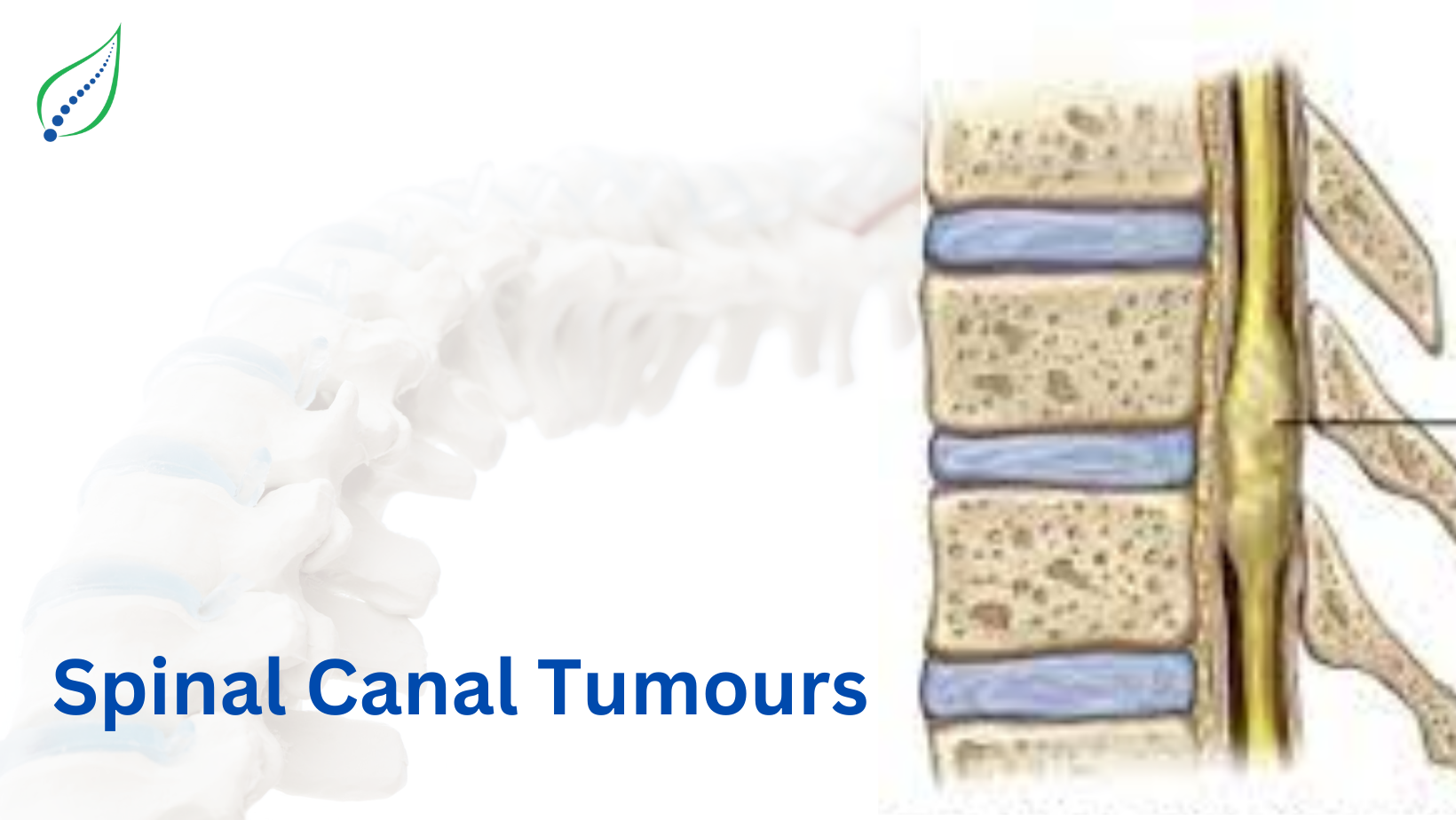Spinal Canal Tumour
A spinal tumor is an abnormal growth of cells within or surrounding the spinal column. Spinal tumors can be benign or malignant. These cells grow unknowingly and increase in number if remained unnoticed.
Tumors are referred according to two different ways:
- Depending on the region of the spine: Cervical, thoracic, lumbar, sacral.
- Depending on the location:
- Intradural extramedullary: The tumor is located inside the dura mater which is a thin covering of the spinal. Nerve tumors are generally benign here.
- Intramedullary: These tumors grow inside the spinal cord. They typically derive from glial or ependymal 5%.
- Extradural: The tumor is located outside the dura mater which is the thin covering surrounding the spinal cord. Frequency of occurrence in this location vs the ones above is approximately 55%. These lesions are typically attributed to metastatic cancer.
Causes of spinal canal tumor:
Primary spinal tumours have no recognised cause. Several of them might be related to contact with substances that causes cancer. Weak immune system develops lymphomas of the spinal cord.
Primary tumors are result of these two genetic diseases:
- Neurofibromatosis
- Von-Hippel Lindau disease
Symptoms related to spinal canal tumor:
- Pain at the site of tumor.
- Reduced sensation to heat and cold.
- Back pain increases at night.
- Difficulty in walking.
- Muscle weakness, loss of movement.
- Improper bowel movements.
- Back pain radiates to other body parts.
- Muscle spasms.
- Numbness in legs, arms and chest.
Types of spinal canal tumors:
Spinal cord tumors affect many different parts of the spine, and there are many different types, including:
- Medulloblastoma: This tumor starts in brain cells and tends to quickly spread to the spine. It's most common in children.
- Glioma (ependymoma, astrocytoma, or ganglioglioma): This is a tumor that starts in cells called glial cells.
- Chordoma: This tumor starts in the bones of the spine and can push against the spinal cord.
- Schwannoma: This starts inside the cells that cover and protect nerves.
- Meningioma: This tumor starts in the tissues around the spinal cord (meninges).
- Metastatic (secondary) tumor: This is cancer that started in another part of the body and has spread to the spinal cord.
- Lymphoma: This is a cancer that starts in white blood cells called lymphocytes. It's rare, but it can start in lymphocytes in the central nervous system (CNS). This is called a primary CNS lymphoma.
- Multiple myeloma: This is a cancer that starts in the bone marrow. It can form in the marrow of the bones of the spine and damage the spinal cord.
Diagnosis:
- XRAY: Person is exposed through a radiation to produce a film to get the clear view of the structure of the vertebrae and the joints around it. But XRAYS don’t know the sign of reliable tumors.
- Computed Tomography: It shows the shape and size of the spinal canal, its content and structure around it. Its good at visualising bony structures.
- Magnetic resonance imaging: It provides a 3-dimensional image of the body structures. It also shows the spinal cord nerve roots, surrounding areas as well as enlargement, degeneration, and tumors.
- Bone scan: A diagnostic test using Technectium-99 which is helpful in identification of bone tumors or infection and disease related to abnormal bone metabolism.
- In some cases, a biopsy may be needed if diagnosis is unclear or if concern for malignancy vs benign tumor type. If the tumor is malignant, a biopsy also helps determine the cancer's type, which subsequently determines treatment options.
Non-Surgical Treatment:
Nonsurgical treatment includes observation, chemotherapy and radiation therapy. Some tumors respond well to chemotherapy and others to radiation therapy. However, there are specific types of metastatic tumors that are inherently radioresistant.

_1742973131.png)
_1742634080.png)

